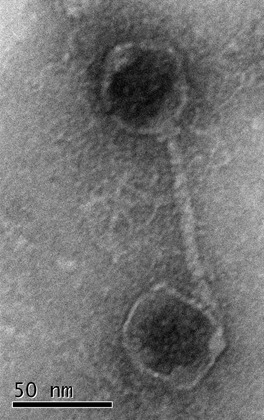GROUP ERDMANN / Project ER 879/2-1
The role of membrane vesicles for archaeal virus-host interactions
Prokaryotic membrane vesicles (MVs), also described as extracellular vesicles (EVs) in the literature, are nano-sized (10-300nm) spherical structures, derived from the cell surface. By current understanding they are associated with various crucial functions mostly related to the communication of cells with their environment and have also been shown to play significant roles for virus-host interactions.
Almost nothing is known about the existence and the physiological role of MVs in the third domain of life, Archaea. This project will focus on both, the influence of viruses on MV production in halophilic archaea (haloarchaea) and the role of MVs produced by haloarchaea in virus-host interactions.
Thereby, we expect to elucidate whether and to which extent MVs play a role for archaeal virus-host interactions and significantly enhance our understanding of virus-host interactions in prokaryotes.

Figure 1: Electron microscopy image of a virus particle attached to a membrane vesicle. © Max Planck Institute for Marine Microbiology/Susanne Erdmann
Principal Investigator(s)

Dr. Susanne Erdmann
Max Planck Research Group `Archaeal Virology’
Max Planck Institute for Marine Microbiology
E-Mail: serdmann@mpi-bremen.de
Homepage: https://www.mpi-bremen.de/en/Max-Planck-Research-Group-Archaeal-Virology.html
Co-applicant/PostDoc
Dr. Coraline Mercier
Max Planck Research Group `Archaeal Virology’
Max Planck Institute for Marine Microbiology
E-Mail: cmercier@mpi-bremen.de
Homepage: https://www.mpi-bremen.de/en/Max-Planck-Research-Group-Archaeal-Virology.html
PhD student(s)
Lauren Queiss (lqueiss@mpi-bremen.de)
Publications
- Erdmann, S., Tschitschko, B., Zhong, L., Raftery M. & Cavicchioli R. A plasmid from an Antarctic haloarchaeon uses specialized membrane vesicles to disseminate and infect plasmid-free cells. Nat. Microbiol. 2:1446-1455 (2017).
